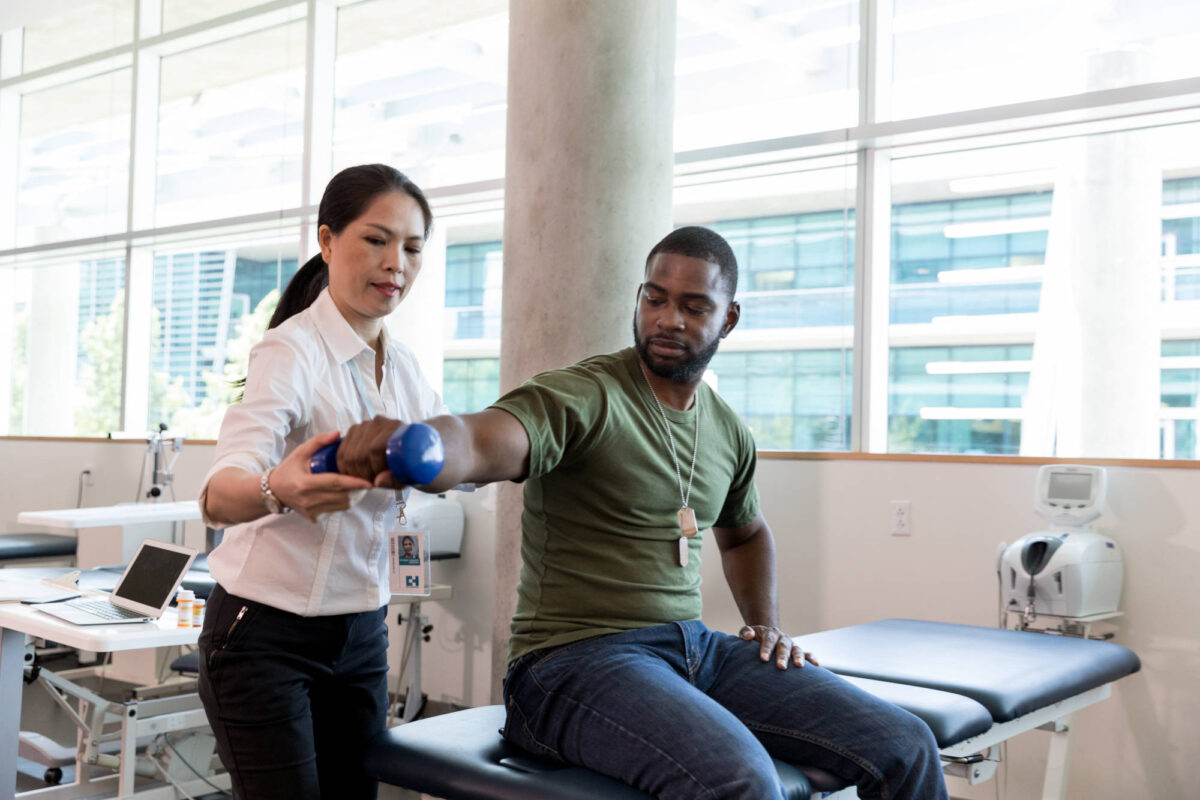Strength Training to Manage Hemophilia Pain

Hemophilia is a serious disorder that can have broad impacts on an individual’s health, physical function, and overall well-being. The disease is usually inherited and is caused by a mutation in a gene that encodes a clotting factor, resulting in either an impaired or missing clotting protein (CDC, Srivastava). As a result, people with hemophilia can experience spontaneous bleeding or excessive bleeding following injuries or surgery (CDC, Srivastava, Calatayud). Though hemophilia is often associated with the medical setting, its impacts on muscles and joints also make physical therapy and strength training a core part of treatment.
Due to its X-linked nature, the disease is significantly more common among males, occurring in about 1 in 5,000 male births (CDC). Physiologically, patients have low levels of either clotting factor VIII, which results in hemophilia type A, or factor IX, which results in hemophilia type B (CDC, Srivastava). Though treatment of the disease itself involves infusions of the missing clotting factor, experts recommend a holistic approach to prevent complications and ensure that people with hemophilia live healthy, full lives (CDC). Bleeding caused by hemophilia most commonly occurs in the joints and muscles, especially hinged joints like the ankle, knee, and elbow (Srivastava, Calatayud), which can cause swelling, pain, and tightness, as well as chronic joint disease (CDC). As a result, patients are encouraged to exercise and maintain a healthy weight to protect their joints, promote strong muscles, maintain good bone density, develop coordination, and improve fitness (CDC, Srivastava). Unfortunately, symptoms of hemophilia can initiate a cycle of “pain, physical inactivity, muscle weakness, muscle atrophy, and increased bleeding risk” (Calatayud). Therefore, researchers have sought to determine strength training and physical therapy approaches that avoid exacerbating hemophilia symptoms.
A pilot study by The National Hemophilia Center of Israel tested whether progressive resistance physical therapy would be suitable for patients and found that muscle strength increased, especially surrounding the target joints, while bleeding frequency and severity decreased (Tiktinsky).
Following these promising preliminary results, a larger study by Catayud et al. examined the effect of progressive intensity strength training using elastic resistance. Strength training can “decrease the number of circulating inflammatory cells, reducing or preventing bleedings and associated pain,” but sufficient exercise quantity and intensity “are needed to induce proper morphological and neural adaptations” (Catayud). Researchers focused on elastic resistance to minimize impact force and risk of accidents. 20 patients with hemophilia were randomly assigned to either the intervention group or control group, with the intervention group undergoing strength training 2 days/week for 8 weeks with gradually increasing intensity, while the control group continued their usual daily routine. After 8 weeks, patients in the intervention group saw statistically and clinically significant improvements in strength in almost all targeted joints, as well as in other measures of functional ability. Furthermore, this group experienced psychological benefits in the form of greater pain reduction, self-rated overall status, and desire to exercise when compared to the control group (Catayud). Despite using higher intensities and volume than previous studies, no adverse events occurred, suggesting that good coverage with clotting factor enables patients to safely engage in moderately strenuous exercise (Catayud, Srivastava).
Physical therapy has a wide range of applications, from rehabilitation after acute injuries to long-term conditioning for chronic diseases. For patients with hemophilia, physical therapy manages the potentially debilitating side effects of joint pain and chronic joint disease.
References
Calatayud, J.; Pérez-Alenda, S.; Carrasco, J. J.; Cruz-Montecinos, C.; Andersen, L. L.; et al. Safety and Effectiveness of Progressive Moderate-to-Vigorous Intensity Elastic Resistance Training on Physical Function and Pain in People With Hemophilia. Physical Therapy. September 2020, vol. 100, no. 9, pp. 1632-1644. DOI:10.1093/ptj/pzaa106
Centers for Disease Control and Prevention. “Hemophilia Centers for Disease Control and Prevention, National Center on Birth Defects and Developmental Disabilities. Reviewed on July 17, 2020. Available: https://www.cdc.gov/ncbddd/hemophilia/facts.html
Srivastava, A.; Brewer, A. K.; Mauser-Bunschoten, E. P.; Key, N. S.; Kitchen, S.; et al. Guidelines for the management of hemophilia. Haemophilia. January 2013, vol. 19, no. 1, pp. e1-e47. DOI: 10.1111/j.1365-2516.2012.02909.x
Tiktinsky, R.; Falk, B.; Heim, M; Martinovitz, U. The effect of resistance training on the frequency of bleeding in haemophilia patients: a pilot study. Haemophilia. January 2002, vol. 8, no. 1, pp. 22-27. DOI: 10.1046/j.1365-2516.2002.00575.x
